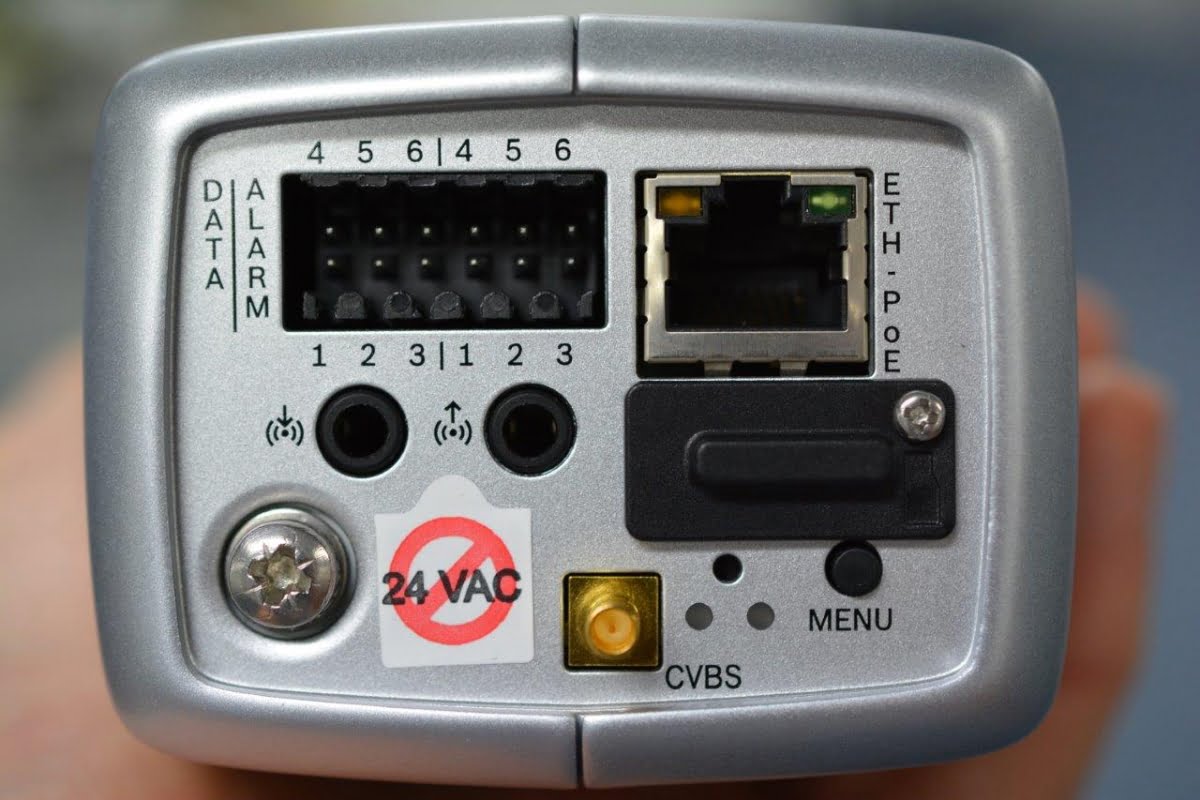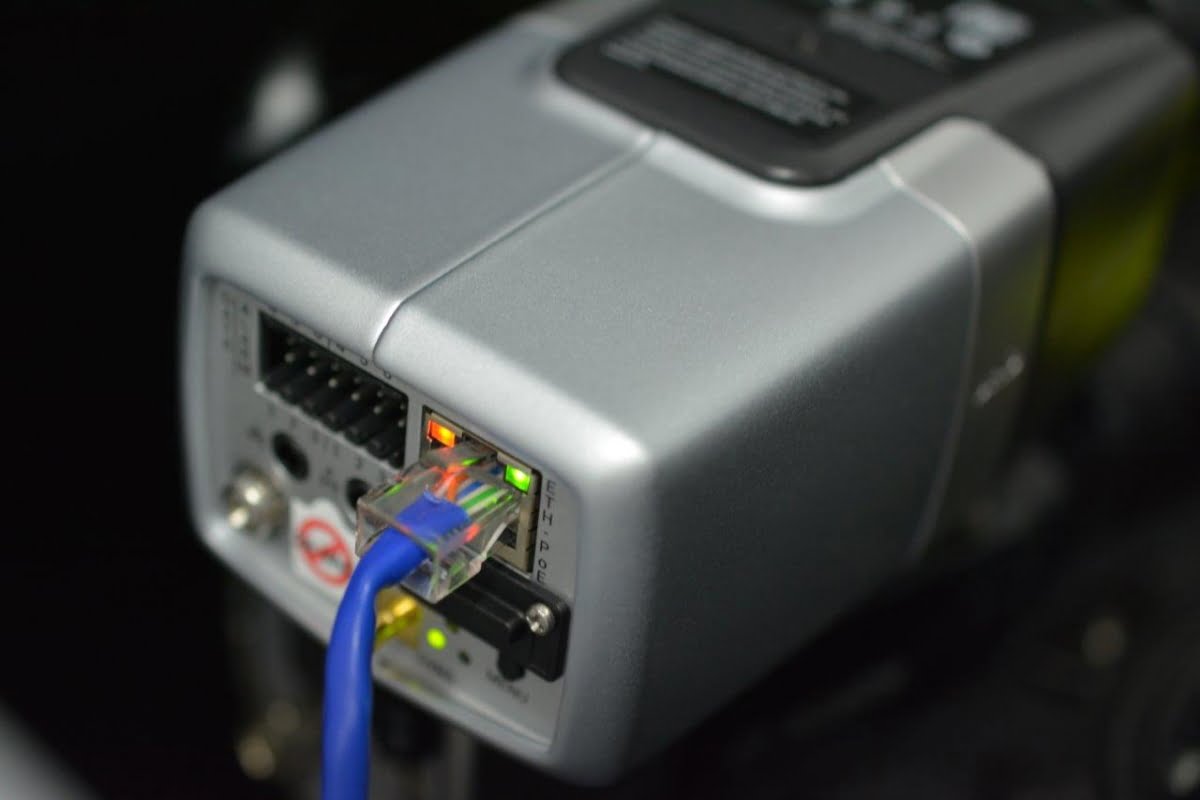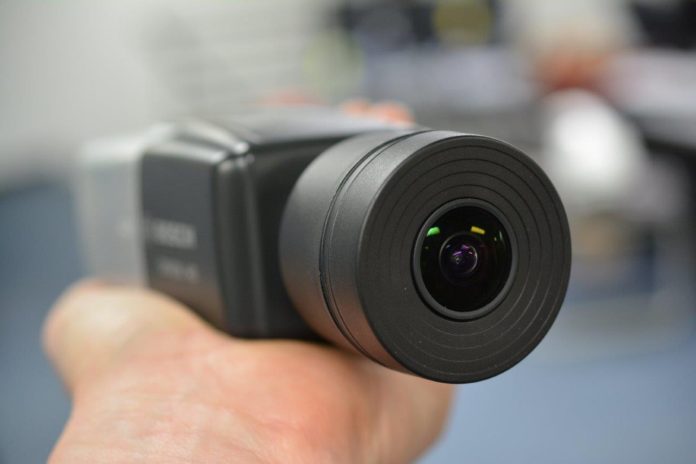Bosch will release its new Dinion IP Ultra 8000MP day/night camera early in 2015. This 1/2.3-inch camera offers 4k UHD at 30ips, strong WDR, minimum scene illumination of around 2 lux in colour at 4K and loads of other features. SEN got a sneak peak late December.
AT it’s heart, Bosch Dinion IP ultra 8000MP has a large 4 x 3 sensor that gives a whopping 12 megapixels of resolution. The beauty of all this metadata is that it allows Bosch’s engineers to do a bunch of fun things with the raw file making camera performance extremely flexible now and in the future. In some ways this new Bosch camera feels more like a platform than a traditional video camera – there’s a lot of flexibility in its performance.
If you use the camera at 4K and 30ips, the big 12MP image is cropped to UHD – that’s 3840 pixels X 2160 pixels, or a bit over 8MP. But you can still employ the full 12MP at a frame rate of 20ips if you choose. The fact Bosch is delivering 4K at 30ips is worth noting, too. Plenty of 4K cameras don’t offer full frame rate.
Importantly, there’s decent wide dynamic range. The camera offers 92dB native and you can squeeze another 16dB out of the sensor using intelligent auto exposure – that’s a total of 108dB. And fairly typical of Bosch, this WDR is based on OECF charts, it’s not based on the somewhat arbitrary claims of inhouse design teams.
Low light performance is good, too, considering the huge number of pixels Bosch has laid onto the surface of the sensor. The specification suggest you get useable images at just under 2 lux and in this demo I saw the camera in a dark box at under 1 lux giving situational awareness at close ranges.
The video functions of the 8000 are what you’d expect from Bosch. You have adjustable picture settings contrast, saturation and brightness, white balance from 2500-10,000 K, auto electronic shutter with selectable fix, backlight compensation options, intelligent noise reduction, contrast enhancement, 4 privacy masks, image flip and watermarking. Operating temperature is -20 to 50C, which is on the low side for extreme external applications but ideal for big internal applications like airports, or locating under roof eaves in train stations.

Dinion IP ultra 8000MP is a nice looking camera with good feel.
But something that’s really interesting about the 8000 is the camera’s 9 configurable user modes. It’s a bit like something you’d find in a DSLR menu. You choose a mode and once applied, the camera automatically selects settings for aperture, exposure and frame rate, as well as tweaking the processing engine to give you the best performance. This is nice for installers who may not be experts in CCTV camera setup but what it really offers is a faster install.
Modes include Indoor, which is designed for typical indoor scenes without sun or any strong artificial light sources. Meanwhile, Outdoor mode handles general outdoor scenes with sun highlights and strong light sources and Night Optimised mode tweaks the camera for best performance in low light.
There’s a Low Bit-Rate mode, an Intelligent AE mode optimised for scenes with variations in front and rear light caused by sunlight or artificial light, and a Vibrant mode for enhanced contrast, sharpness and saturation. A Sports and Gaming mode gives high speed capture and improved colour rendition and sharpness.
Meanwhile, Traffic mode is designed for monitoring traffic movement on roads or in carparks while minimising movement artefacts. It can also be used in industrial applications where fast moving objects are being monitored. Finally, there’s a Retail mode offering improved colour rendition and sharpness with reduced bandwidth requirements.
Other strong features include Bosch’s intelligent video analysis, intelligent auto exposure and intelligent noise reduction. Bosch’s IVA combines 8 rules to reduce false alarms. Meanwhile, IAE manages big variations in strong light in the background and foreground. IDNR reduces bandwidth by distinguishing between noise and actual movement in a scene. This capability means it is able to reduce its uptake of noise at the sensor – so no excess noise is captured at all.
While all this is going on, Bosch’s IDNR adjusts spatial and temporal filtering based on analysis of scene content and there’s motion compensated temporal filtering to reduce motion blur associated with standard temporal filtering. The result is improved quality of fast moving objects at optimised bitrates. Another feature that reduces bandwidth demand is area-based encoding. It allows 8 user defined regions to be set – regions not of interest can be highly compressed saving bandwidth for important parts of the scene.
When it comes to recording, you can manage this on a local or remote server using Bosch video recording manager or point the camera at iSCSI without needing software. The camera also has an SDXC slot that allows local storage of up to 2TB on flash when it becomes available. Cool, too, the camera supports time-based or alarm-based JPEG posting to 4 different accounts – cloud or FTP – as video clips or still images.

Ports and I/Os…
Testing the Dinion IP Ultra 8000MP
Holding this camera in your hand you get a sense of the quality of the unit. It’s got serious weight to it at 860 grams and looks nicely made, all the joints are clean, the ports on the rear are smooth and tidy. There’s nothing raw about the build at all that I can see – it’s very Bosch.
According to Bosch’s Steve Malesevic, the talk about the new UHD 4K/12MP camera camera is about how good it is in low light despite having a monster resolution.
“One of our reps showed it to a couple of consultants and they were nonchalant until the Ultra 8000 MP was hooked up and thrown into a laptop bag,” he explains. “The camera stayed in colour and they could read a letter at the bottom of the bag. The rep then turned off the lights in the room – obviously a little light was coming through the zipper or stitching – and only then did the camera switch to monochrome mode but they could still see the letter.”
Malesevic gets to work hooking up the camera so we can view its performance in the dark box. Same as all Bosch IP cameras, you have a choice of Bosch management software, browser or a free video client with video security app, as well as any third party software. In this case, we are browsing into the camera directly from a convenient local workstation with a colour-corrected Bosch monitor.
“It’s an interesting looking lens,” I say, pointing out the convex shape of the camera’s wide angle lens.
“Yes, this camera comes factory fitted with one of 2 lens options, a 5mm with a 70-degree FoV and a 3.2mm with a 120-degree FoV,” Malesevic explains. “Both focus closer than you’d seriously ever need them to – the 5mm to 1.1m and the 3.2mm goes down to .045m.”
We are looking at the 120-degree 3.2mm lens in this review and when it’s hooked up and I’m pointing the camera around the room, there’s no doubt the field of view is colossal. It’s like having eyes in the side of your head. Wider angle lenses tend to give strong depth of field and this is no exception, even given the constraints of the space here at Bosch’s Huntingwood facility.
The UHD 8000 MP is simultaneously resolving my watch, the room, and peering out through the window and getting images in the carpark – the latter without being bothered by backlight of probably 12EV. The field of view is almost 3-D, with everything in the scene in good focus. I’m able to see quite fine detail throughout the scene as I point the camera around the demo room.
Something else you get with all wide angle lenses is distortion. Depending on the type of lens manufacture, rectilinear or curvilinear, straight lines may bow in the scene or the edges of the scene may become distorted. Swooping the camera around this 8 x 10m internal scene hunting parallel lines, I’m not seeing any noticeable distortion at all, though objects (unrealistically) close to the lens expand in the typical wide angle way. My guess is that this lens is rectilinear – it preserves straight lines – though it’s possible there’s some corrective software tidying things up in-camera. It’s a very well proportioned image.

Bosch Dinion IP ultra 8000MP in the dark box
Colour rendition is good. In the dark box I note that contrast remains strong on the lines of the test chart. There’s no sign of noise snow from wild ISO settings at low light levels, no detail-eating noise reduction artefacts, no sign of a camera failing into answer that great contradiction – maintaining brightness while minimising colour noise. To the eye there’s no sign of colour fringing or vignetting on the colour-corrected Bosch monitor, though light levels in the room are constant and moderate, so not much of a challenge.
Something else wide angle lenses have a tendency to do is make objects that are more distant seem further away than they really are. But while this camera is gobbling great swathes of real estate, in this internal application the proportions remain good. Performance under the 200-250 lux fluoros in the room is neither too warm nor too cold. I can see no pronounced colour shift. It’s a very neutral image.
Malesevic has got the camera into the dark box and we get the image up on a monitor in front of us. Oddly enough, it’s very dark in the dark box. I can’t measure the lux inside without holding the lid open partially but with the lid shut it would have to be .1 of a lux at very best. With the lid closed you can actually see a little of the test chart detail but there’s no colour at all. Being able to see the chart with the lid shut is an accomplishment. There’s no sign of light around the rim.
With the lid held open about 5mm to let a little light in you are arguably getting less than 2 lux inside the box and that lets you see the chart, the divisions in the chart, and other items in the box. With the lid of the box opened a little further, you get colour and at around 7-10 lux the image is very good indeed.
Something I note during the demo is that despite all the work it’s doing, this camera runs perfectly cool. It speaks of layers of clever design. Most high resolution cameras that are doing a lot of paddling under the surface give away their labours as considerable heat through the housing. Not the Dinion IP Ultra 8000MP.
“There’s enough processing power in these cameras so that even at 4K you are getting full frame rate – that’s unusual,” Malesevic says. “Many of our competitors will do live video at 1080p but at 4K they’ll only do 12 or 15 frames per second. This camera does 30 frames per second at 4K and at 12MP will still deliver 20ips – it’s strong performance.

Browser screen – this grab is with the box lid open.
These are quad streaming cameras. Stream one might be 4K at 30ips, stream 2 is a copy of 1, stream 3 is the iframes only and stream 4 is jpeg. The entire stream array is too complex to go into in a prose piece, it’s best explained using a stream assignment table. Suffice to say, it gives integrators and end users a lot of room to move.
“A feature of the Dinion IP Ultra 8000MP I really like is independent regions of interest,” Malesevic tells me. “This means we can have 2 operators controlling virtual PTZ in a region of interest simultaneously and independently of the other. An important aspect of this functionality is Intelligent Tracking (iTracking), which is constantly analysing the scene looking for moving objects. Once an object is detected, the camera adjusts settings including field of view, to get the best possible view.”
Bandwidth requirements are surprisingly light, considering the resolution on offer here. At 30ips and 4K, the bandwidth is 6000kbps, at 1080p it’s 1600kbps, while at 12MP at 20pis, bandwidth is just over 5Mbps.

Steve Malesevic
“If you consider that even a 1080p image stream would be 1500-2Mbps and if you multiply that by 4 to get the resolution of a 4K camera then you would multiply the bandwidth by 4,” Malesevic says. “But the bandwidth performance of the Dinion IP Ultra 8000MP is superior.”
This latest release comes on the back of the Dinion IP starlight 8000 MP and both these releases show Bosch remains a force to be reckoned with in networked video surveillance. This company makes very good cameras that made hard work look easy. 4K remains edge-tech in CCTV, yet the Ultra 8000 MP feels and looks like an extremely polished offering. ♦
By John Adams
Features of the Dinion IP ultra 800 MP include:
* 4k UHD at 30ips
* 12MP at 20ips
* Bandwidth of 6000kbps at 4K, 30ips
* Wide dynamic range of 92+16 dB (based on OECF charts)
* 2 4K H.264 streams, 1 stream of i-frame and 1 JPEG stream
* Minimum scene illumination 1.9 lux at 4K
* Intelligent noise reduction (50 per cent reduced bit rate)
* Intelligent video analysis
* Intelligent auto exposure
* Full duplex audio streaming.








